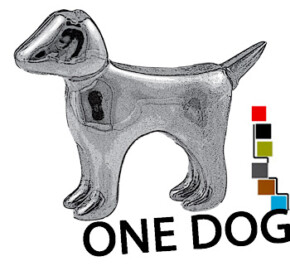One Dog is an exhibition about photography and history. About photography and history presented from various perspectives and times, which are constructed from fragments of memories, which are free from their usual duty of imaging and creating comprehensive strings.
The construction of the exhibition is similar to the principle of a passage, where storeys constitute one space, but stay in a certain distance and isolation from each other. Similarly, each of the project opens up to other ones, and although they were separated from each other in the historical order, one can find them the continuation of the questions discussed before
/R. Różanowski, Passages of Walter Benjamin. Studium myśli, Wrocław 1997, p.13/.
The history is then one of the possible directions of tracking the meanings; other appear unexpectedly, intertwining with each other and creating – like in a passage – a construction without a distinct centre. Choosing the first of those possibilities, the viewer travels in time, going back from the year 2000 to 1950s. On their way, they encounter traces – sets of meanings which are reflections of roles and forms assigned to photography over the years. Staged situations are a background for the viewer, who automatically takes the part of their main character, becoming: a creator and viewer of images in a world full of them; a consumer of image spectacles unsure of his buying power; a man seeking relief in the power and energy of nature; a homo ludens in the kingdom of absurdity; a flaneur looking at himself in a shop display; and, finally, the receiver of collective social thought.
Photography is a constant and most important element of that journey, presenting itself with the power that was assigned to this medium in subsequent decades. The archival texts, technologies and techniques outlined the conventions of imaging, subject and even the way of arranging of particular projects. Narratives constructed on this basis disperse in many different directions, indicating further possibilities of One dog. For, giving up the chronological order of the exhibition, one can follow its fragments, wondering over the function and role of an image, which – regardless of time – can be a medium for propaganda manipulations; a creator of myths; an attractive content of consumerist machine; a document recording transience and passing of phenomena; or a reflection one cannot escape. Exactly in this place the architecture of the passage starts to grow, presenting new joints of fragments and quotations from individual parts of the exhibition. One dog does not answer the question How it actually was?, it doesn’t try to recreate an image of the past; it doesn’t teach how the photography functions in the artist-reality-viewer system – rather, out of many fragments it builds a multiplied construction. In it, photography and history play the role of the content carrier and artistic paradigm. The artists fit perfectly into this strategy, speaking from the screen with the voices of a given time. In the joint project, their staged images, just like individual works of art, repeat the imaging conventions of the historical decades. So the structure of the exhibition comes full
circle, getting back to its start.
One dog is an exhibition about photography and history seen from the perspective of the new millenium, about photography which is a sign of artistic sensitivity and about history that each of them adapted in their own way.
dr Małgorzata Jankowska


